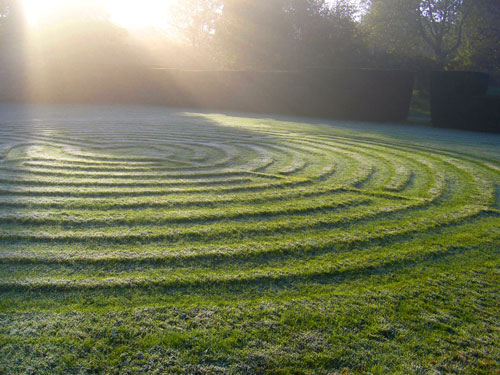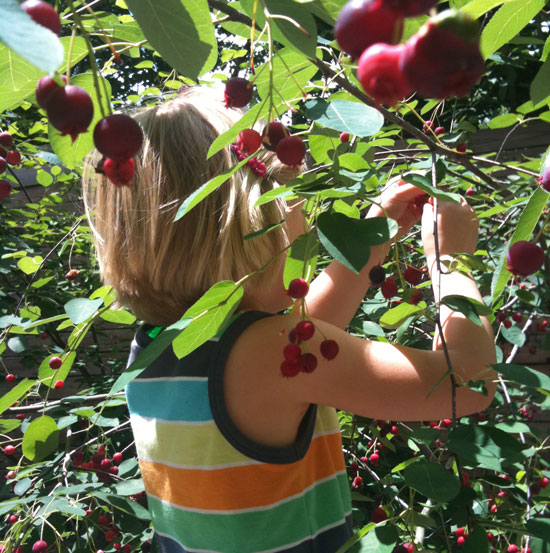In last week’s Garden Designers Roundtable, the theme was “Therapy and Healing in the Garden” and not one but two posts focused on labyrinths (Jenny Petersen’s “Therapeutic Spaces“) and (Lesley Hegarty and Robert Webber’s “‘Homage to Ariadne’ – Labyrinthine Therapy“). I’ve been meaning to blog about this subject for awhile, so their posts were a good nudge.
Both Jenny and Lesley and Robert distinguish between labyrinths and mazes. Historically, they were much more similar. The Greek mythological labyrinth was designed to confuse the Minotaur, and the dictionary defines “labyrinthine” as “entangled.” The term is often used when describing, say, the process of doing one’s taxes, or dealing with an insurance company, or the U.S. healthcare system.
But, as Robert and Lesley explain, since 430 AD, “a labyrinth has had a single unambiguous path to the centre and back.” And as Jenny further describes, “a labyrinth is a flat surface containing an intricately designed pathway, but it’s important to note that it is not a maze. A maze is a left-brained puzzle, full of different pathways containing tricks and turns. Fun, but not therapeutic! A labyrinth has only one pathway that moves back and forth from side to side until you reach the center–no need to figure out where you’re going; you just walk and the pathway will lead you. In fact, a favorite quote of labyrinth enthusiasts comes from the philosopher and theologian St. Augustine (345-430 A.D.) who said, ‘Solviture ambulando. It is solved by walking.'”
Esther Sternberg, in her excellent book Healing Spaces: The Science and Place of Well-Being devotes a chapter to mazes and labyrinths, and she, too, makes a clear distinction between the two, arguing that the former are challenging and stressful, and the latter generally have the opposite effect, calming and centering us in a form of walking meditation (click here to link to the TLN Blog’s interview with Dr. Sternberg, in which we discuss this and other subjects).
Jenny provides one possible explanation for this effect: “There’s a thought that labyrinths are a calming activity because of something called ‘bilateral movement.’ It’s that back-and-forth movement of the body/brain that is said to have a calming effect–think of other back-and-forth movements/activities that calm you: pacing, knitting/crocheting, reading. The side-to-side motion of the labyrinth path can help ease anxiety and depression, aid people with ambulatory/balance issues and supplement meditation or prayer.”
Labyrinths come in several different styles and can be made from many different materials, including something as simple as the mown pictured above. For some more examples, see Jenny and Lesley and Robert’s posts. They have found their way into hospitals, schools, churches, prisons, public parks, and myriad other places where they are believed to serve a holistic function of bringing balance into our lives.
I had a chance to walk the labyrinth on the rooftop garden at the American Psychological Association this summer, where Holly Siprelle gave ASLA Healthcare and Therapeutic Design members a tour. Theirs is a 7-circuit Santa Rosa labyrinth designed by Dr. Lea Goode-Harris, an active member of The Labyrinth Society. It’s a joint effort between the APA, the World Resources Institute, and the TKF Foundation and is used often by staff and visitors as a way to take a break and decompress. The garden also has a neat finger labyrinth, shown below (this one was custom-made, but you can find finger labyrinths at this website, www.relax4life.com).
My colleague Randy Eady is a big proponent of labyrinths and their benefits. He has written, spoken, and consulted extensively on the subject and his website, www.easichi.koshareyrhythms.com, is a wealth of knowledge.
We are still building the Therapeutic Landscapes Network’s Labyrinths page, where we list resources (in print or online), research, and images. We would love to expand this list, so please, leave your comments here!






